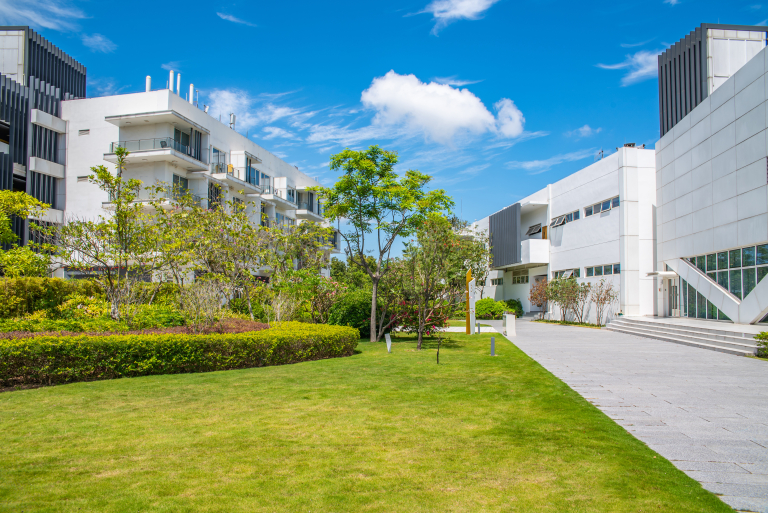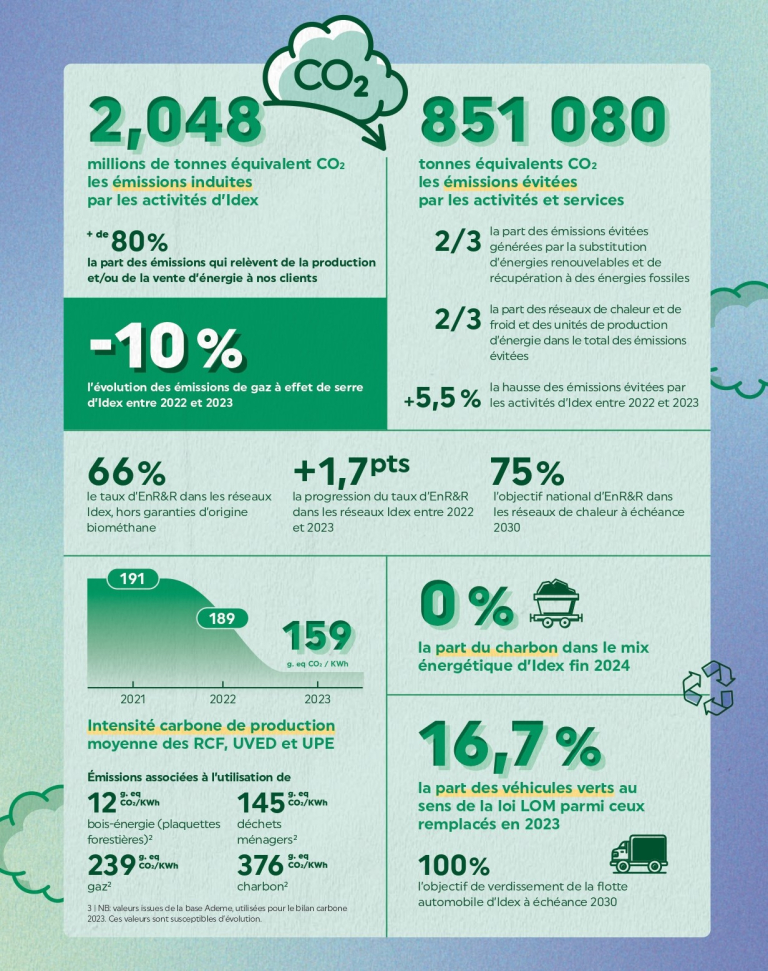Carbon balance sheet: Idex accelerates its decarbonisation in 2023
In 2023, Idex continued its drive to accelerate the energy transition. Our carbon balance sheet shows the significant progress made in reducing our own environmental footprint and that of our customers.
In 2023, Idex emitted just over 2 million tonnes of CO2 equivalent. Eighty percent of these greenhouse gas emissions are emitted by the production and/or sale of energy (heat, steam, cold, electricity) for Idex customers.
At the same time, we avoided the emission of over 850,000 tonnes of CO2 equivalent. This figure can be compared to the annual emissions of a city of 100,000 inhabitants, or the cut achieved by taking 385,000 combustion vehicles off the road.
These figures show how the Group is decarbonising the activities of its customers. In 2023, compared with 2022:
→ greenhouse gas emissions fell 10%.
→ the carbon intensity of production activities1[AP1] continued to fall, from 189 gCO2eq/kWh to 159 gCO2eq/kWh
→ the emissions avoided by our activities and services increased by 5.5%.
Idex is following a carbon roadmap compatible with its goal of achieving net zero by 2050. The key objective is to continuously reduce the carbon intensity of its production mix.
The main levers for reducing the carbon intensity of production activities are:
-
reducing the share of fossil fuels in the energy mix, particularly those with the highest emissions:
-
Coal consumption fell by 20% between 2022 and 2023. Coal had disappeared from Idex's production mix by mid-2024, in line with commitments.
-
Idex has developed alternatives for customers with oil-fired boilers (mainly in the Alps and eastern France) alternative solutions.
-
-
the development of renewable and recovered energies in all activities:
-
Heating and cooling networks: the share of renewable and recovered energies in heating networks was 66% in 2023, up 1.7 points on 2022. The objective for Idex is to reach, and even exceed, the national target of 75% of renewable and recovered energies by 2030.
-
Waste-to-energy plants: the mix consists of 100% recovered energy. It nevertheless emits greenhouse gases, owing to the fossil fuel component of incoming waste. As a result, the main solution to reduce the carbon intensity of this activity is to improve energy efficiency.
-
Energy production units: continued development based on renewable and recovered energies, mainly biomass.
-
Energy Infrastructures for buildings: development of solar energy, heat pumps, geothermal energy, etc.
-
Idex is also seeking to be exemplary in its own practices, and is aiming to green its entire vehicle fleet by 2030. The catalogue of company vehicles is now exclusively made up of electric and plug-in hybrid vehicles. In 2023, 16.4% of vehicle replacements were green vehicles within the meaning of the LOM2 Act.
These practical results illustrate our commitment to local, low-carbon energy solutions. From energy conservation to operational excellence and the development of renewables, Idex is a key player delivering low-carbon solutions for local and business needs.


